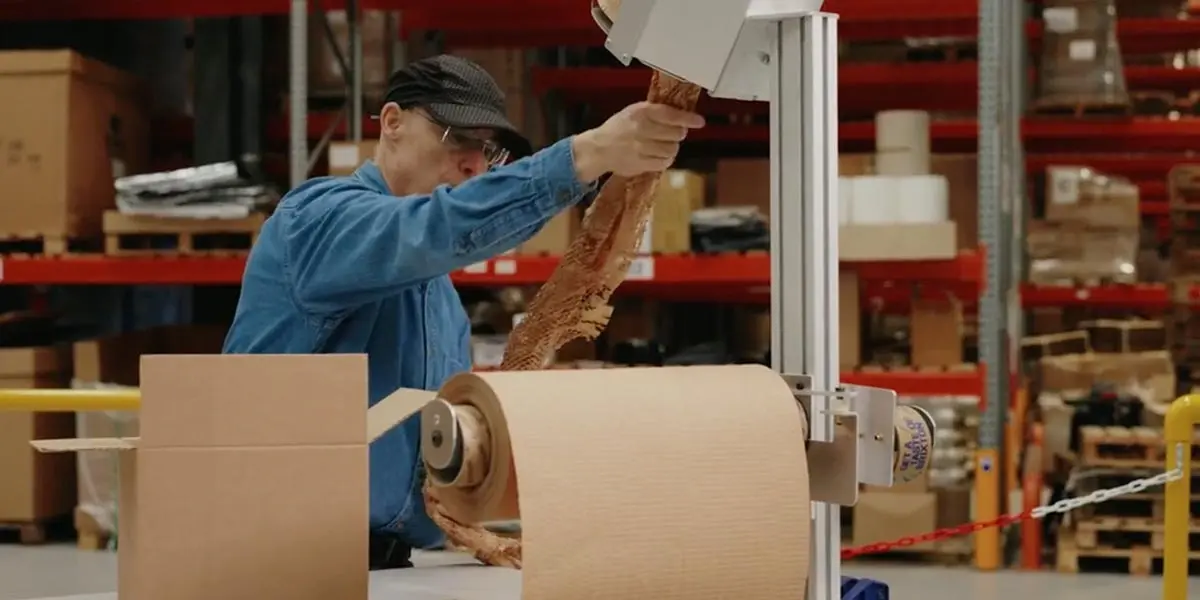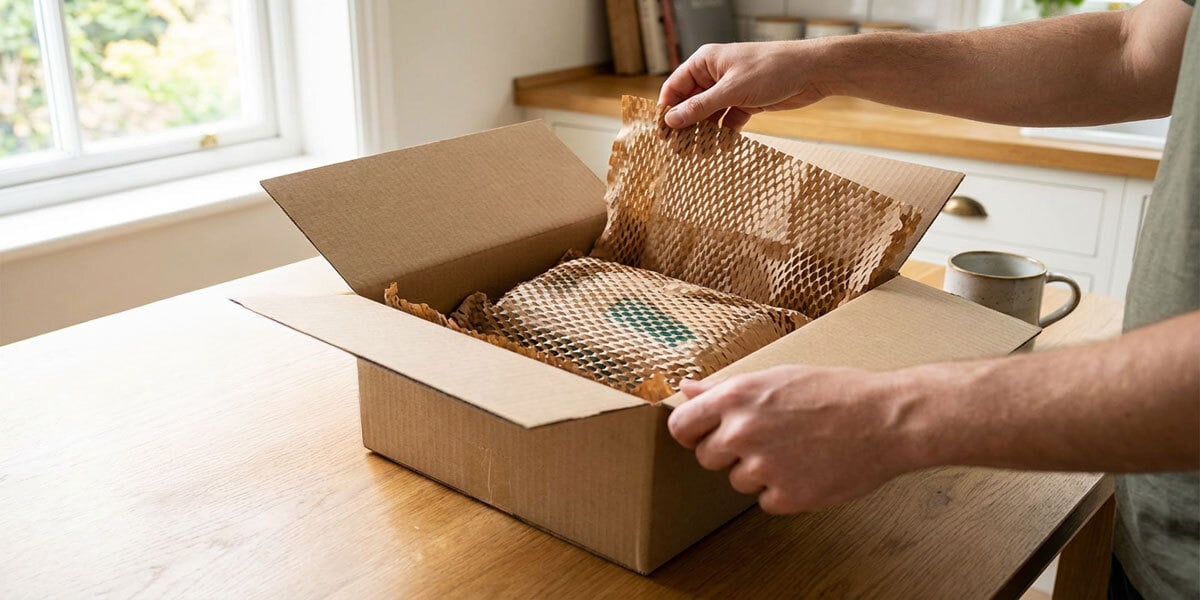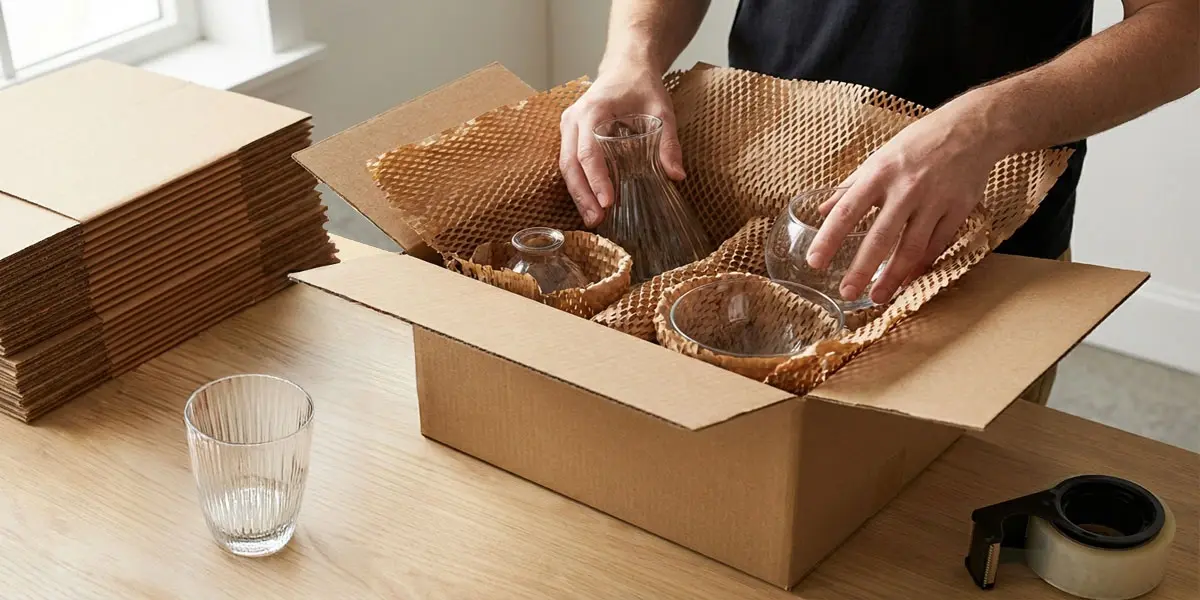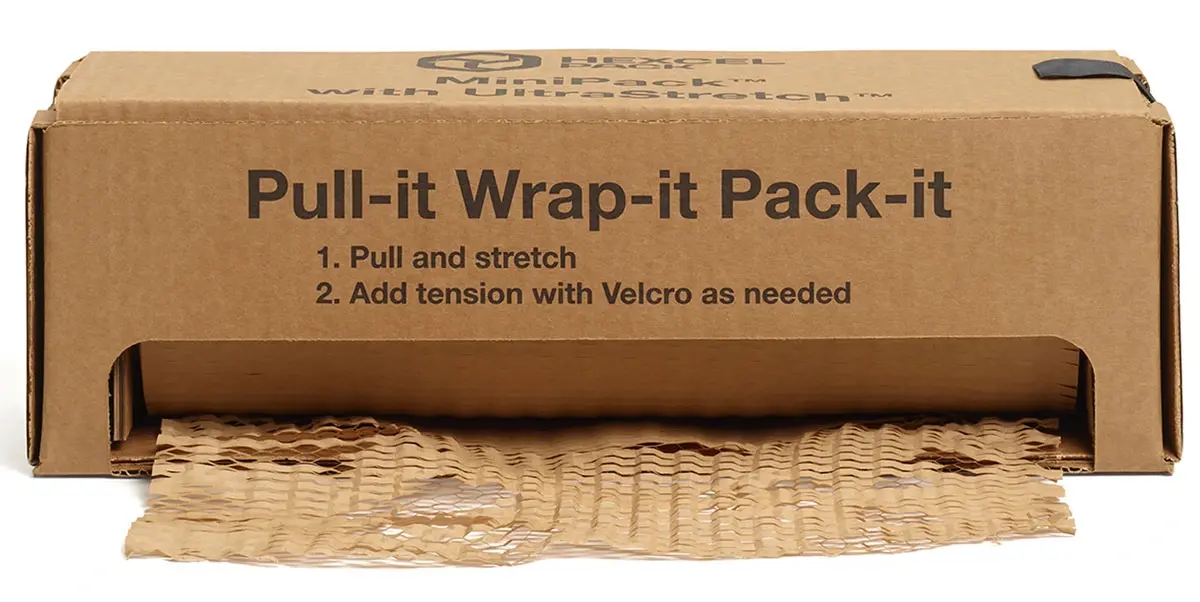How to Use Void Fill to Prevent Damage

Void fill is a crucial part of any packaging strategy. It cushions your products, keeps them secure, and helps prevent costly damage in transit. But if you're new to packaging or just starting your business and looking for materials, understanding what void fill is and how it works is a good first step.
In this article, we give you a crash course in using void fill to prevent damage, including:
- Explaining the purpose of void fill and how it works
- Providing advice on how to get the most protection from void fill
- Answering your most common questions about void fill
With the right use of void fill, you can minimize damage and ensure your products arrive safe and sound.
What Is Void Fill?
Void fill is a packaging material designed to fill empty spaces inside boxes or containers. Its main purpose is to prevent items from shifting during shipping.
If merchandise moves around too much inside the box, it can become damaged. Even if the items don’t break, they might rub against each other, affecting their appearance and making them look used or old.
Void fill comes in many different shapes and materials. For example, you’ve probably seen common types like:
- Packing peanuts
- Plastic bubble wrap
- Balled tissue paper
- Slitted kraft paper
- Air pillows
- Crinkle paper
Not all void fill is created equal, though. In the next section, we’ll explore how choosing the right type can make a big difference in protecting your products.
How to Get the Most Protection from Your Void Fill
Choose the Right Void Fill
The right void fill makes all the difference when it comes to protecting your products during shipping. While it might seem cost-effective to go with a cheaper option, or rely solely on product wrap and simply use more of it, that strategy can actually cost you more in the long run.
Low-quality void fill or overused product wrap can compress during transit, reducing its cushioning ability and allowing items to shift, break, or become damaged. Some types of void fill lose volume over time, creating empty space that puts your products at risk. And when you use more material than necessary, it adds up in both waste and cost.
Instead, choose a void fill that delivers reliable cushioning from the moment it's packed to the day it arrives at your customers door. HexaFil™, for example, is made from 100% PEFC Kraft paper. When dispensed, the slit-sheet paper expands into a three-dimensional cushioning solution to effectively fill empty space, prevent shifting, and protect products throughout the journey.
Other considerations when choosing a void fill include:
- Dispensing options
- Ease of use
- Availability
- Sustainability (see below)
Combine Void Fill with Other Packing Solutions to Maximize Protection
Void fill is designed to eliminate empty space in shipping boxes and keep loose items from shifting, but it’s not meant to provide complete protection on its own. For best results, void fill should be used alongside other protective packaging materials.
Take handmade ceramics, for example. Simply tossing them into a box with void fill isn’t enough. Instead, wrap each item with a protective layer like HexcelWrap™, which cushions the surface and absorbs impact. Then, place the wrapped item in a box filled with void fill to stabilize it during transit. Together, these two materials provide comprehensive protection against breakage.
In other cases, your products may already be packaged in their own retail containers, such as a boxed perfume bottle. Even then, it’s important to use void fill to ensure your items arrive intact and damage-free.
Choose the Right Size Box to Pack Items
Finding the right size box to pack and ship items can also prevent damage. You want a box that gives your items enough room to fit comfortably, with space for void fill to cushion and protect—without allowing the items to sit directly against the outer walls. At the same time, too much extra space means you'll need excessive void fill.
The outer box should also be strong enough to withstand the demands of packing, pallet loading, transit, and last-mile delivery. Thinner, cheaper boxes may seem economical at first, but if they lead to damaged products and frequent returns, they end up costing more in the long run.
FAQs About Void Fill
Still have questions about void fill? Here are some commonly asked questions we hear from clients across a wide range of industries:
1. When do I need void fill?
You need void fill whenever there’s empty space inside a shipping box or container that could allow products to move around during transit. Movement can lead to damage like scratches, dents, or breakage, so filling those gaps is essential to keep your items secure.
Here are some common situations where void fill is necessary:
- Shipping multiple loose items in one box
- Packing fragile or delicate products that require extra cushioning
- Using boxes that are larger than the product size, creating empty space
- Protecting irregularly shaped or oddly sized items
- Preparing packages for long-distance or rough handling shipments
If your products fit snugly with no room to shift, void fill might not be required. But when in doubt, adding the right void fill can save you money by reducing damages and returns.
2. What are the different types of void fill?
Void fill comes in many forms, each designed to protect products by filling empty space and preventing movement during shipping. Here are the most common types:
- Paper Void Fill: Made from kraft paper, like HexaFil™, this option expands when dispensed to create effective cushioning. It’s recyclable, compostable, and biodegradable.
- Plastic Bubble: Plastic sheets with air pockets that provide cushioning. It’s effective, but less eco-friendly.
- Foam Peanuts: Loose foam pieces that fill space and absorb shock. While lightweight and cushioning, many are not biodegradable and can create environmental concerns.
- Inflatable Air Pillows: Air-filled plastic bags that conform to product shapes and minimize weight. Often recyclable but require proper disposal.
- Corrugated Inserts/Dividers: Custom-cut cardboard pieces that hold items securely in place. However, they can add complexity to packing and increase material costs.
Choosing the right void fill depends on your product’s fragility, environmental goals, shipping conditions, and budget. For example, if sustainability is a priority, paper-based void fill like HexaFil™ is an excellent choice.
3. Is all void fill sustainable?
Not all void fill is created with sustainability in mind. Products like styrofoam peanuts and plastic bubble often end up in landfills or polluting natural environments. Even some recyclable materials require specialized facilities that aren’t widely available, making them difficult to process responsibly.
Sustainable packaging like HexaFil™ meets a higher standard. In addition to being recyclable and biodegradable, sustainable packaging should be:
- Made from responsibly sourced or renewable materials
- Manufactured with minimal environmental impact
- Safe and non-toxic for both workers and customers
Sustainability isn’t just good for the planet, it’s also good for business. Studies show that many consumers are willing to pay more for products packaged sustainably. And if you ship to countries within the European Union, sustainable packaging will soon be a legal requirement.
4. Should we use manual dispensing or automated dispensing for our void fill?
The right choice depends largely on your business size, shipping volume, and packing process.
Many of our customers prefer manual dispensers because they’re extremely easy to use. There’s minimal training involved, no electricity required, and they have complete control over how items are wrapped and packed. However, larger operations—especially those shipping thousands of boxes a day with significant void spaces in their boxes—prefer automated dispensing systems because they increase packing speed, reduce material waste through precise dispensing, and help maintain a consistent flow in high-volume environments.
Automated dispensing is great when:
- You need consistent, standardized amounts of void fill in every box (think subscription beauty boxes or other uniform shipments).
- Your business experiences high-volume peak periods, such as winter holidays or summer sales events.
- You’re scaling up and require greater packing efficiency to handle increased order volumes.
Most of our customers combine manual and automated methods to balance flexibility with efficiency. It’s such an important topic that we dedicated an entire blog post to it!
Try HexaFil™
The best way to experience our sustainable packaging is to put it to the test. Send us a sample of your product, and we’ll return it wrapped and packed. If you like what you see, our team will provide you with a detailed shipping analysis on making the switch to our sustainable packaging materials and dispensers.


